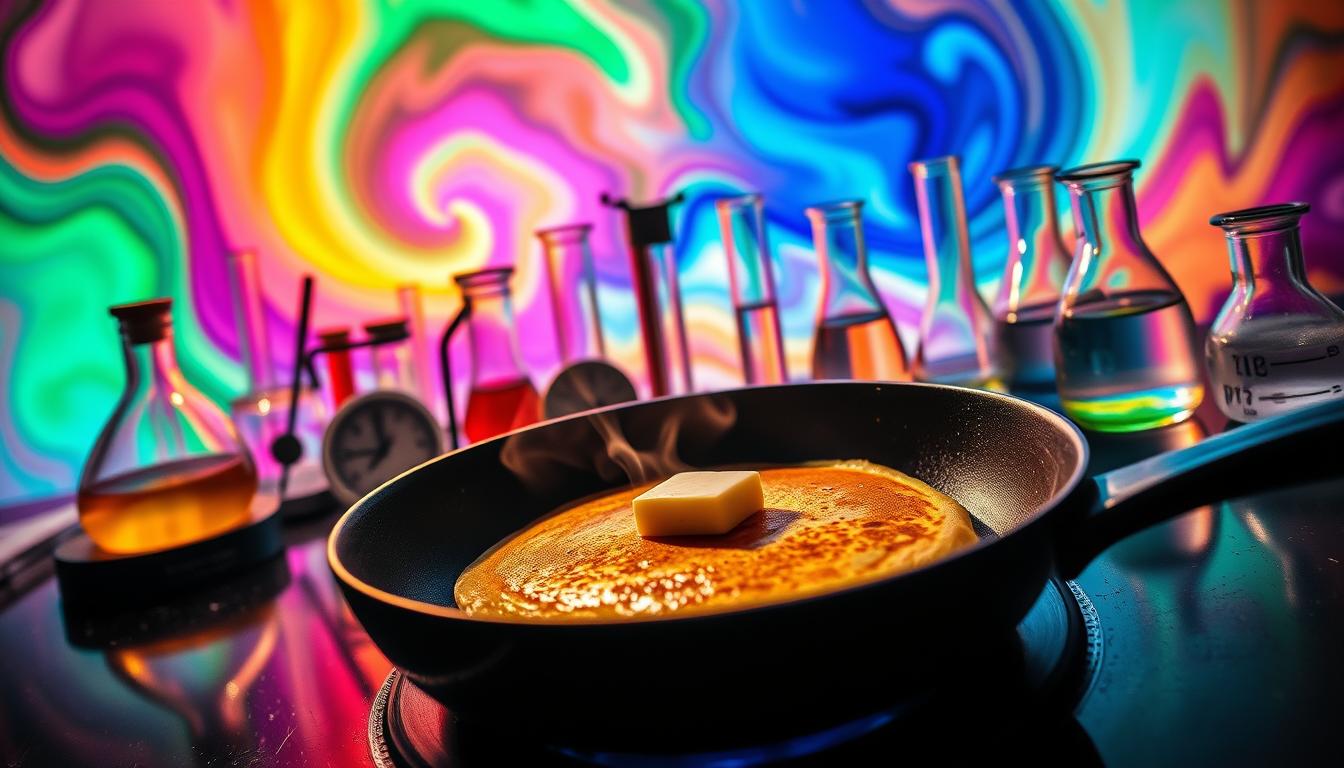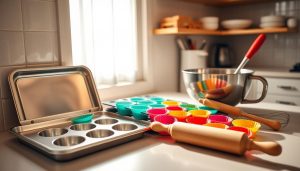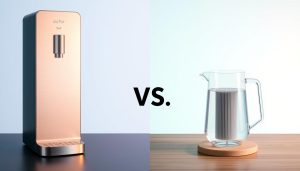73% of home cooks ruin their first pancake due to overlooked scientific principles. What appears simple – flour, milk, and eggs – becomes a molecular ballet when heat hits the pan. Proteins tangle into gluten networks while baking soda releases carbon dioxide bubbles, creating that signature airy texture.
Sticking occurs when three factors collide: incomplete starch gelatinization, uneven surface contact, and disrupted Maillard reactions. Professional chefs treat skillets like laboratories, controlling variables from protein hydration to thermal conductivity. Your spatula becomes a scientific instrument, testing surface readiness through precise temperature calibration.
This guide decodes breakfast alchemy through food chemistry. You’ll master how dairy acidity alters gluten formation, why batter rest periods matter, and when to flip based on bubble patterns. Traditional English crêpes demand different oil viscosity than American-style stacks – knowledge that transforms frustrating mornings into consistent success.
Key Takeaways
- Gluten development directly impacts texture and release from cooking surfaces
- Optimal pan temperature ranges between 325-375°F for proper browning
- Chemical leaveners require specific acidity levels to activate properly
- Fat molecules create non-stick barriers through precise polymerization
- Starch gelatinization timing affects structural integrity during flipping
- Protein denaturation patterns determine golden crust formation
Getting Started: The Science Behind Your Pancakes
Mastering pancake perfection begins with understanding the hidden dance of proteins and gases. Two core processes govern every bite: gluten development and gas expansion. These interactions determine whether your breakfast becomes airy clouds or rubbery discs.

Understanding Gluten Formation and Its Impact on Texture
Flour contains glutenin and gliadin – proteins that awaken when mixed with liquid. As you stir batter, these molecules link into elastic webs. Proper gluten development creates structure to trap air while preventing collapse during cooking.
Overmixing tightens these networks, squeezing out precious gas pockets. Gentle folding preserves space for bubbles to expand. The ideal batter shows slight lumps, signaling restrained gluten activation.
The Role of Chemical Leaveners in Creating Air Bubbles
Baking soda needs acidic ingredients like buttermilk to trigger carbon dioxide release. Baking powder contains built-in acids for dual-phase reactions. Double-acting varieties work smarter, generating gas during mixing and again at 140°F.
| Leavener | Activation Time | Acid Source | CO₂ Release |
|---|---|---|---|
| Baking Soda | Immediate | External (e.g., buttermilk) | Single burst |
| Baking Powder | Liquid + Heat | Internal (cream of tartar) | Two stages |
Timing matters. Fast-acting agents require quick cooking to capture bubbles. Slow-reaction powders give more flexibility. Matching leaveners to other ingredients ensures consistent lift without metallic aftertastes.
Exploring the Physics of Pancake Release
Surface adhesion in pancake cooking involves precise interactions between batter chemistry and thermal dynamics. When proteins bond with metal surfaces before starch sets, sticking becomes inevitable. Controlling these reactions requires strategic mixing and timing.

Mixing Techniques: Avoiding Overworked Batter
Gluten strands tighten with excessive stirring, creating dense pancakes that cling to pans. Stop mixing when flour pockets disappear – visible lumps indicate proper hydration without overdevelopment. This technique preserves air pockets critical for lift.
Use a folding motion rather than circular stirring. Proteins align more gently, reducing elastic tension. Test consistency by lifting the spatula; ideal batter drips slowly while holding shape momentarily.
Batter Resting and Its Effect on Gluten Relaxation
Resting allows gluten networks to unwind, improving texture and release properties. Starch granules absorb liquid during this period, thickening the mixture naturally. This process reduces raw flour taste through enzymatic activity.
| Batter Type | Resting Time | Leavener | Texture Outcome |
|---|---|---|---|
| Traditional | 30-60 minutes | Yeast | Light, tender |
| American-Style | 0 minutes | Baking Powder | Fluffy, airy |
Chemical-leavened batters demand immediate cooking to capture CO₂ bubbles. Delayed cooking causes gas escape, producing flat results. For buttermilk-based recipes, 10-minute rests balance hydration without sacrificing lift.
Adjust resting times based on flour protein content. High-gluten blends benefit from extended relaxation, while cake flour mixtures require shorter intervals. Track viscosity changes – properly rested batter flows like heavy cream.
Practical Techniques for Perfect Pancakes
Heat management separates mediocre results from consistently golden-brown masterpieces. Every flip reveals whether you’ve balanced protein denaturation with caramelization – a culinary tightrope walk governed by physics.
Cooking Methods and Temperature Control
Egg proteins solidify at 144°F, while starch gelatinization begins at 158°F. Maintain 365°F surface temps using the water droplet test – beads should skitter, not sizzle violently. This sweet spot accelerates Maillard reactions without burning sugars.
Cast iron outperforms non-stick pans through superior heat retention. Preheat for seven minutes, then brush with high-smoke-point oils. These form polymerized layers that repel batter while enhancing flavor complexity.
Ingredient Substitutions and Their Scientific Implications
Replace buttermilk by adding 1 tbsp lemon juice per cup of milk. The acid activates baking soda, creating lift without metallic aftertaste. For gluten-free recipes, xanthan gum mimics wheat proteins by binding moisture and stabilizing air pockets.
Table salt’s fine crystals distribute unevenly compared to kosher varieties. Adjust measurements when substituting – ½ tsp table salt equals 1 tsp Diamond Crystal. Sugar does more than sweeten; it accelerates browning through caramelization at 338°F.
Conclusion
Morning pancake rituals transform into predictable successes when guided by food chemistry. Every step – from mixing flour proteins to timing acid-base reactions – follows testable principles. Controlled gluten networks and precise gas expansion now work for you, not against your breakfast goals.
Batter behavior reveals hidden science. Carbon dioxide bubbles lift stacks skyward when baking soda meets acidic milk. Heat triggers starch gelatinization at exact temperatures, creating golden surfaces that release cleanly. These reactions occur whether making fluffy American-style or delicate French crêpes.
Armed with chemical insights, ingredient swaps become strategic choices. Substitute buttermilk with lemon juice or adjust resting times without guesswork. Troubleshooting sticks to logic: uneven browning signals temperature shifts, while dense textures hint at overmixed gluten.
This knowledge turns recipes into flexible frameworks. Experiment confidently, knowing how each adjustment affects protein bonds and air pockets. Breakfast becomes a laboratory where every flip proves science delivers consistency – one perfect pancake at a time.



